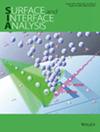开发用于 XPS 的实验室高能源
IF 1.8
4区 化学
Q4 CHEMISTRY, PHYSICAL
引用次数: 0
摘要
在过去的五十年里,人们提出了许多能量更高的 X 射线源,以替代第一批商用 XPS 系统中的常见 AlKα 源,这种源至今仍是 XPS 的标准阳极材料。本文回顾了主要由作者实验室开发的一些此类源,以及希望扩大该技术结合能范围的理由。本文介绍了消色差源 SiKα、ZrLα 和 TiKα,以及单色源 AgLα 和 CrKβ,两者都基于标准的石英单色器几何结构,但采用了更高阶的衍射。推动这一发展的主要动力是探测更深核级和 CCC 奥杰跃迁的愿望。正如本综述中引用的大部分工作所描述的那样,这些可以结合到初始或最终状态的奥杰参数中。考虑的最高能量源是基于外部 X 射线管的 CuKα 源,通过测量 Fe1s 和 FeKLL 峰,可以深入了解钢的电子结构。在过去十年左右的时间里,人们对 HAXPES 的兴趣大大增加,所有整套 XPS 仪器的制造商都提供了这样或那样的 HAXPES 选项,目前市场上有三种专用的 HAXPES 系统,现对其进行简要介绍。本文章由计算机程序翻译,如有差异,请以英文原文为准。
The development of laboratory‐based high energy sources for XPS
Over the last fifty years, a number of higher energy X‐ray sources have been suggested as alternatives for the usual AlKα source found in the first commercial XPS systems and still the standard anode material for XPS today. This paper reviews the development of a number of such sources, predominantly in the authors' laboratory, and the rationale behind the desire to extend the binding energy range of the technique. The achromatic sources SiKα, ZrLα and TiKα are described along with monochromatic sources AgLα and CrKβ, both based on the standard quartz monochromator geometry but taking higher orders of diffraction. The driving force for much of this development was the desire to probe deeper core levels and CCC Auger transitions. These could be combined into initial or final state Auger parameters as described in much of the work cited in this review. The highest energy source considered is the CuKα source based around an external X‐ray tube, which provides much insight into the electronic structure of steels by measurement of the Fe1s and FeKLL peaks. The last decade or so has seen a significant increase of interest in HAXPES, and all manufacturers of turn‐key XPS instruments offer HAXPES options of one form or another, there are three dedicated HAXPES systems commercially available, which are very briefly described.
求助全文
通过发布文献求助,成功后即可免费获取论文全文。
去求助
来源期刊

Surface and Interface Analysis
化学-物理化学
CiteScore
3.30
自引率
5.90%
发文量
130
审稿时长
4.4 months
期刊介绍:
Surface and Interface Analysis is devoted to the publication of papers dealing with the development and application of techniques for the characterization of surfaces, interfaces and thin films. Papers dealing with standardization and quantification are particularly welcome, and also those which deal with the application of these techniques to industrial problems. Papers dealing with the purely theoretical aspects of the technique will also be considered. Review articles will be published; prior consultation with one of the Editors is advised in these cases. Papers must clearly be of scientific value in the field and will be submitted to two independent referees. Contributions must be in English and must not have been published elsewhere, and authors must agree not to communicate the same material for publication to any other journal. Authors are invited to submit their papers for publication to John Watts (UK only), Jose Sanz (Rest of Europe), John T. Grant (all non-European countries, except Japan) or R. Shimizu (Japan only).
 求助内容:
求助内容: 应助结果提醒方式:
应助结果提醒方式:


